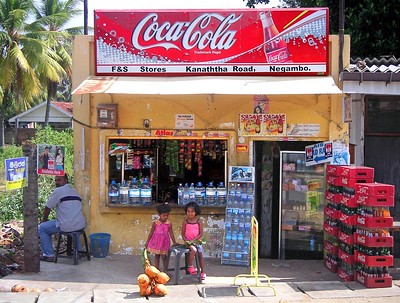The past two years have been unusual and difficult for Sri Lanka, with the pandemic crippling what was an already weakening economy.
Consequently, public authorities and policy-makers need to focus on protecting the poorest and most vulnerable segments of societies from economic distress. Their struggle to do so raises a major question – at the onset of an economic and social crisis, what is the most reliable and sustainable way to protect the interests of the poor?
While COVID-19 brought with it a slew of economic challenges, this essay will focus on its large and immediate threat to food supply. The threat was, in part, due to the fragmentation of agricultural supply chains which led to higher costs of production. As we know, higher costs translate to higher prices for essential food items.
So how should policies be designed to enable equal access for the poor, who cannot afford to pay these higher prices?
The Plight of Sri Lanka
Consider the case of Sri Lanka and its government’s misguided relief package for COVID-19, intended to alleviate some of the economic burden on low-income earners. To combat rising food prices at the onset of the pandemic in March 2020, price ceilings were imposed on a number of essential food items, including rice, dhal, and canned fish. Government-mandated price ceilings are set below the market equilibrium price for goods, forcing merchants to reduce the selling prices of price-controlled products.
While on the surface, this well-intentioned policy action aimed to enhance the affordability and availability of food for low-income earners, it wound up achieving the opposite.
The Irony of Price Ceilings
Although price ceilings make staples affordable for consumers in the short run, they often carry long-term disadvantages, including shortages, black markets, and, as will be explored in greater depth, greater costs for small business owners. It should also be noted here that with a pandemic (which is still raging over a year and a half later), long-term and sustainable policy decisions are key.
In Sri Lanka’s case, the small independent retailers that make up a large proportion of Sri Lanka’s sizeable informal sector workforce bore the brunt of price ceilings. Anyone who has been to Sri Lanka can attest to the sheer volume of ‘petti kadés’ or wayside shops on virtually every street. These small business owners make their living selling essential food items that the government imposed price controls on overnight.
An article by local media agency, Roar, confirms that small business owners had to suffer losses from the sale of price-controlled food products. For instance, an independent retailer would actually make a loss of Rs. 60 on a kilo of dhal following the price controls imposed in March of 2020.
Economic theory dictates that when the price of a good or service falls, the demand for it rises. Price serves an indispensable signalling function. When the Sri Lankan government interfered with this function and imposed price controls, there was a disproportionate increase in demand for the essential items.
Unsurprisingly, reports of shortages and black markets of the same commodities also emerged shortly after. This could have been foreseen, given that commodities with artificially-reduced prices are usually targets of hoarding – where speculators purchase large quantities to re-sell at higher prices on a black market. Shortages and hoarding ultimately rendered the intended effects of price controls, accessibility and availability, useless.
With the sudden imposition of price controls, the government failed to consider the full impact of meddling in product markets; it failed to consider both the ‘seen’ and the ‘unseen’ effects of the policy action. Ironically, the country’s financially insecure informal sector workers, who were the intended beneficiaries of the government’s policy response, ended up bearing the costs of the price ceilings.
Alternatives to Price Ceilings
A longer-term, more sustainable alternative to ensure equal access to food would have been to scale up the country’s social protection schemes. This measure would provide the poverty-stricken with the means to obtain their own food products at market-determined prices – whether these means were through vouchers or direct cash transfers.
There is certainly scope for Sri Lanka’s social safety net to be expanded and prioritized as the country’s foremost policy response. Expenditure on the Samurdhi programme, which is the government’s main social protection program, accounted for only 2% of recurrent expenditure in 2020. Additionally, cash transfers to vulnerable groups only amounted to around 0.6% of GDP in 2020, and around 0.1% of GDP thus far in 2021, as estimated by the IMF. This is significantly lower than the assistance provided in other South Asian countries.
In the absence of price controls, suppliers of agricultural products could be assured of a strong and autonomous market; retailers could be assured of stable profits during an economic crisis; and the citizens of a country could be assured of food security and a less painful path out of the pandemic.
Read more: Ensuring Freedom from Compliance Raj
Post Disclaimer
The opinions expressed in this essay are those of the authors. They do not purport to reflect the opinions or views of CCS.






